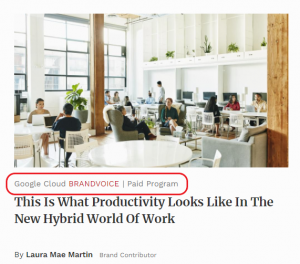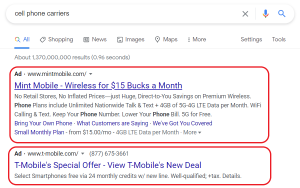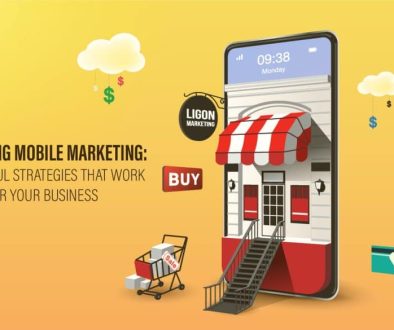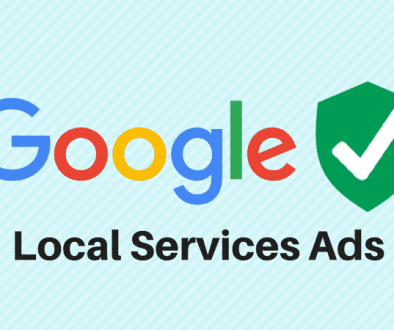Digital Advertising Part II: Which Type of Advertising Is Best for My Business?
If you’re reading this, we hope you’ve read part one of our digital advertising blog series: What Is Digital Advertising and Why Do I Want It?
Welcome to the second article in our multi-part series on the ins-and-outs of digital advertising. Now that you know the basics, you’re probably asking: which type of advertising should I use to grow my business? We’re here to help you answer that by exploring the pros and cons of five primary strategies. Social media, display, native, remarketing and Google ads marketing.
Let’s dive right in.
Social Media Advertising
As of 2020, approximately 3.96 billion people use social media platforms worldwide (that’s roughly half the world’s total population). With so many people spending their time on social sites, advertising on Facebook, Instagram, YouTube, Twitter, Pinterest or LinkedIn can be very lucrative.
What makes social media advertising so attractive?
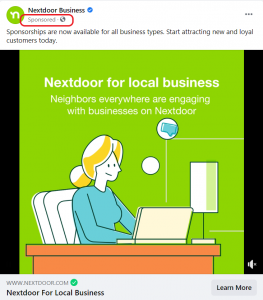
Targeting. Social media platforms offer a wide selection of targeting options for advertisers – you can target by location, age, gender, income, education, profession, interests, behaviors and other demographics. Segmented targeting ensures that you’re placing ads in front of people most likely to be responsive to them.
Engagement. Social media platforms are designed to foster connection and communication. Thoughtful and engaging ads can draw the likes, comments, follows, and clicks that help you build a better relationship with your audience.
Social media platforms are an incredibly popular place for users to be online. That means they’re also an incredibly popular place for other advertisers. With so many brands clamoring for attention – and so many ads dominating users’ feeds – standing out is difficult if you’re new to social media. Making a real impact requires a time-intensive (and costly) effort to craft compelling content, monitor the results in real-time, and adjust as necessary.
And even that may not be enough. Even if you use specific targeting to place ads in front of your core audience, they may not be interested in purchasing at that time. Social media advertising can pay off, but it takes time, patience, and a financial investment to hit your stride and see results.
Display Advertising
Display ads – also called banner ads – appear on third-party websites or apps affiliated with search engines and ad networks. Banner ads are very versatile and can include a combination of text, images, logos, video and interactive elements.
What makes display advertising so attractive?
- Brand awareness. Display ads are designed to be attractive, engaging and visually appealing to visitors browsing the web. You can build up brand awareness, position your brand top of mind, and create initial interest in your products and services.
- Targeting. Display advertising offers targeting options – you can choose the websites and platforms you want your ads to appear on, and you can select specific criteria (location, age, interests, etc.) for your targeted audience. Targeting increases the chances that your ads will be seen by people who are interested in your products and services.
Display advertising has significant drawbacks as well. Display ads typically have lower click-through-rates and lower conversion rates than other forms of advertising. While you’re able to target your core audience, display advertising isn’t effective if viewers aren’t actively seeking your products and services.
The second major drawback is ad blindness. Consumers are besieged by ads everywhere they go online, causing many browsers to scroll by advertisements without really seeing them. Ad frustration has also led to the rise of ad blockers that allow visitors to scroll in peace but cost you impression opportunities.
Native Advertising
Native advertisements are designed to blend seamlessly into the platform where they are displayed. They look and feel like other content on a website or social media platform, but native ads are paid for by advertisers and have a “Sponsored” label on them. You may not even notice native ads as you scroll through a website or social feed – they look like regular articles that are “recommended for you,” “articles you might like,” or “promoted content.”
What makes native advertising so attractive?
-
Relevancy.
Native ads mainly appear on websites, blog posts and social media feeds related to your products and services, meaning your audience is already interested in your subject area and more likely to click on your content.
-
User experience.
Native ads are less disruptive to the user experience because they integrate seamlessly within content that visitors are already reading.
-
Engagement.
Today, many consumers have ad blindness, where they scroll past obvious ad content without stopping to read it. Native ads generate more time, attention, engagement and higher click-through-rates because they don’t look like ads. Instead, they match the type of content readers are already looking for, driving more clicks.
But native advertising isn’t for everyone. While native ads are more engaging at first click, readers may feel duped or taken advantage of once they realize your content is an advertisement. Native advertising only pays off when you craft well-written, useful and engaging content with the reader in mind. A poorly crafted ad will only increase users’ feelings of deception once they realize the content is an advertisement – and that can lead to a negative brand perception.
Creating native ad campaigns is a time-intensive and costly process. Measuring the effectiveness of your campaigns is another challenge because there are no standard metrics to track ROI, actions taken, or ad impact. And finally, native advertising doesn’t drive traffic to your website and therefore has few SEO benefits.
Remarketing Advertising
Remarketing is a useful advertising method to display ads to people who have already visited your website. This form of advertising uses digital cookies to follow users around the web and target them with ads for specific products or services they viewed on your site. The purpose of remarketing is to draw visitors back into the conversion cycle.
What makes remarketing so attractive?
- Recall value. Many consumers aren’t ready to make a purchasing decision the first time they see a product or service on the web. But repeated exposure through remarketing ads familiarizes consumers with your brand and increases brand recognition. When the time comes to make a purchase, your brand will be top of mind.
- Conversions. Studies have shown that remarketing ads have high click-through-rates and increased conversion rates. The term “effective frequency” describes the idea that consumers must be exposed to an ad several times before the ad drives an action – although exactly how many times ad exposure should occur is still up for debate.
Unfortunately, remarketing can quickly go sour with poor execution. There’s a fine line between showing an ad too many times and not showing it enough and finding that balance is challenging. The major drawback of remarketing is that consumers may find retargeted ads creepy, annoying, invasive, or frustrating.
Paid Search Advertising
Search engine marketing (SEM) displays paid advertisements at the top of search engine results pages (SERPs) on Google, Bing, Yahoo and other platforms. Paid search is arguably one of the most effective ways to find your audience online and drive quality traffic to your website. And among search engines, Google reigns supreme. Google processes more than 3.5 billion searches per day, and many of those queries are from users looking for more information, reviews and recommendations before purchasing a product or service.
What makes paid search advertising so attractive?
User intent. Keyword targeting is what sets paid search apart from other types of digital advertising. Targeting specific, valuable keywords with high user-intent lands your ads in front of an audience that’s already in the research or consideration phase of the purchasing process. You can also launch targeted campaigns based on audience demographics, location, or even time of day. Precise targeting is a driver of high-quality traffic and high conversion rates.
Prime placement. Paid ads appear top of page on Google, which is exactly where you want to be when users are searching for your products or services. When you coordinate your paid search and SEO efforts, you have the chance to rank twice for the same keyword – in paid search listings and organic listings, doubling your brand exposure on the page.
Immediate visibility. Search ads begin generating results immediately, driving targeted, high-quality traffic to your website. Paid search advertising is an excellent technique for gaining short-term brand awareness, especially if you’re still building your organic SEO strategy.
Paid search advertising is the most expensive method of digital advertising. While you gain immediate web traffic when ads are running, the flipside is a steep drop-off in leads once the ad campaign finishes. Paid search requires an on-going budget to keep driving site visitors, and the costs can add up quickly. While you have complete control over how much or how little you spend, bidding for fiercely competitive ad space is not always cheap.
Wow, That Was a Lot of Information – How Do I Get Started?
Now that you have a better idea of the pros and cons of each type of digital advertising, let’s have a conversation! There’s a lot that goes into starting, running and fine-tuning successful ad campaigns:
- Determining what types of ads will help you meet your business goals
- Choosing a bidding model
- Setting a budget
- Performing market research on buyer personas and target audiences
- Crafting compelling, engaging ad copy, images and video
- Monitoring and tracking metrics
- Optimizing ads in real-time to improve performance
Digital advertising is an incredibly complex landscape to navigate if you’re new to the ad game. That’s why we highly recommend seeking help from an experienced digital advertising and PPC marketing services company like Ligon Marketing. From start to finish, our team will help you create and launch an ad strategy to help you achieve your advertising goals. Call us today at 863-838-5475 or drop us a message online.

